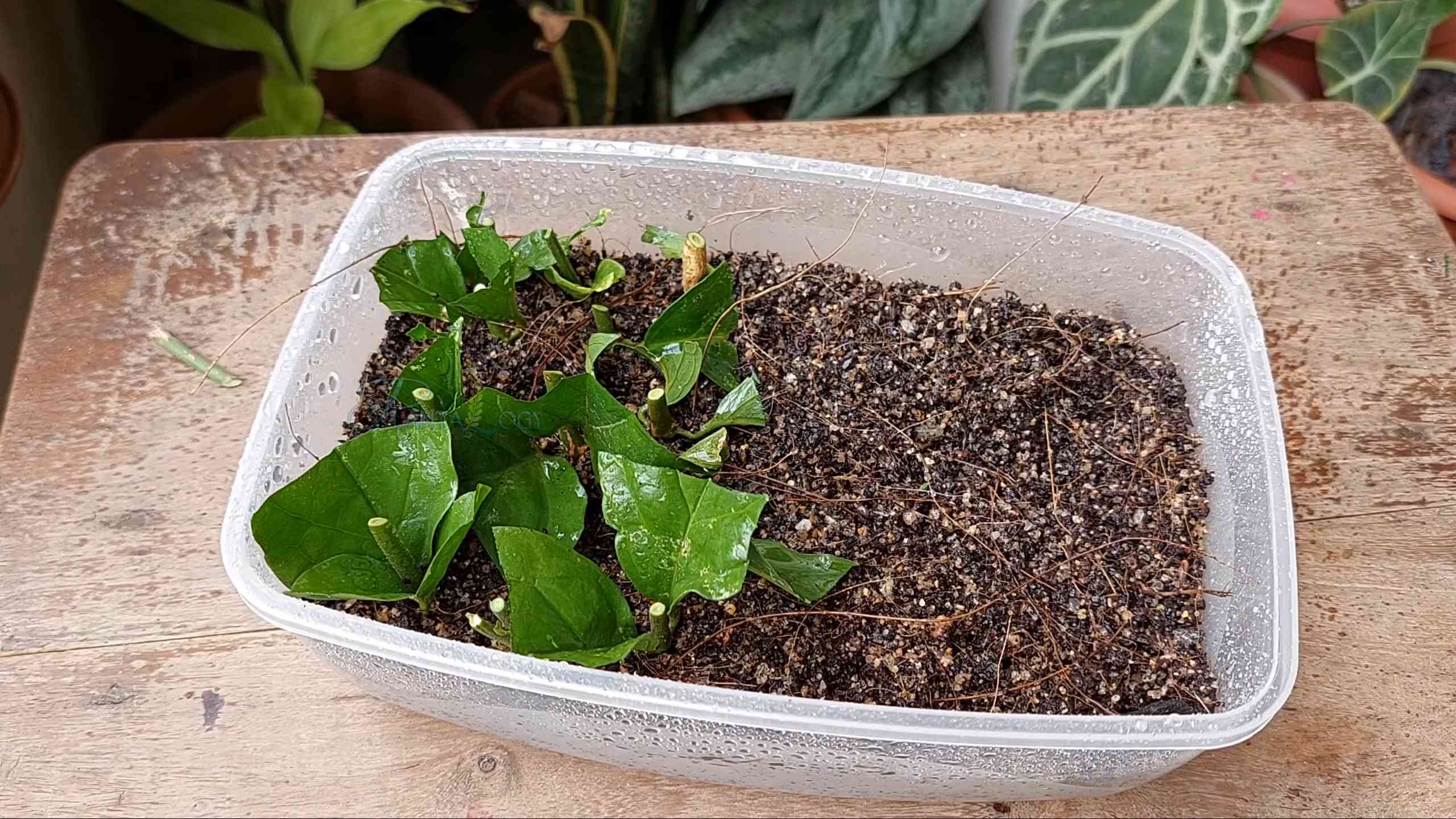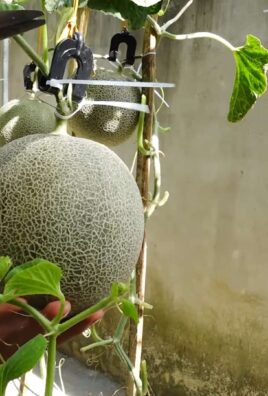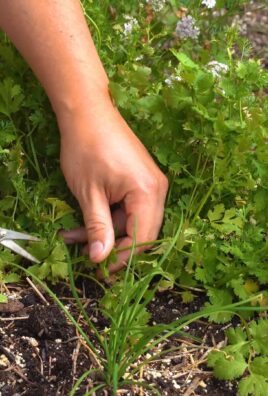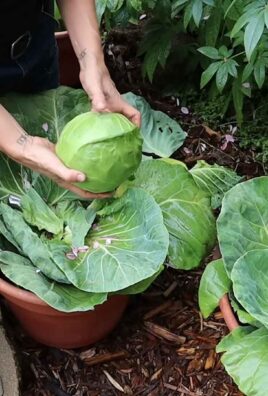Arabian Jasmine Growing Tips: Unlock the secrets to fragrant bliss right in your own home! Have you ever walked past a garden and been completely captivated by the intoxicating scent of jasmine? I know I have! It’s a truly magical experience, and guess what? You can recreate that magic yourself, even if you don’t have a sprawling garden. This isn’t just about planting a flower; it’s about cultivating a sensory experience, a little piece of paradise that greets you every day.
Jasmine, with its delicate white blossoms and powerful fragrance, has a rich history, deeply intertwined with cultures across Asia and the Middle East. For centuries, it’s been used in perfumes, teas, and traditional ceremonies, symbolizing love, beauty, and purity. Imagine bringing that history and symbolism into your own home!
But let’s be honest, growing jasmine, especially indoors, can sometimes feel a little daunting. That’s where these DIY tricks and hacks come in. I’m going to share my tried-and-true methods for ensuring your Arabian jasmine thrives, filling your home with its exquisite aroma. From choosing the right pot to mastering the art of watering, I’ll guide you through every step. You’ll learn how to provide the perfect environment for your jasmine to flourish, even if you’re a complete beginner. So, are you ready to transform your space into a fragrant oasis? Let’s dive into these essential Arabian Jasmine Growing Tips and get started!

Propagating Arabian Jasmine from Cuttings: A Step-by-Step Guide
Hey there, fellow plant enthusiasts! I’m so excited to share my tried-and-true method for propagating Arabian Jasmine ( *Jasminum sambac*) from cuttings. It’s a fantastic way to expand your collection or share this fragrant beauty with friends. Trust me, once you get the hang of it, you’ll be propagating jasmine like a pro!
What You’ll Need
Before we dive in, let’s gather our supplies. Having everything ready will make the process smooth and enjoyable.
* Healthy Arabian Jasmine Plant: This is your source for cuttings. Choose a healthy, vigorous plant free from pests and diseases.
* Sharp, Clean Pruning Shears or Knife: Sterilize your cutting tools with rubbing alcohol to prevent the spread of diseases.
* Rooting Hormone (Optional but Recommended): This will significantly increase your success rate. I personally love using a powdered rooting hormone.
* Small Pots or Containers: Choose pots with drainage holes. I prefer using 3-4 inch pots.
* Well-Draining Potting Mix: A mix of perlite, vermiculite, and peat moss works wonders. You can also use a commercial seed starting mix.
* Clear Plastic Bag or Humidity Dome: This will help maintain high humidity around the cuttings.
* Spray Bottle with Water: For misting the cuttings.
* Warm, Bright Location: Indirect sunlight is ideal.
* Patience: Rooting takes time, so don’t get discouraged if you don’t see results immediately.
Choosing the Right Cuttings
Selecting the right cuttings is crucial for successful propagation. Here’s what to look for:
* Stem Type: Semi-hardwood cuttings are the best. These are stems that are neither too soft and green nor too woody and brown. They should be flexible but not flimsy.
* Length: Aim for cuttings that are 4-6 inches long.
* Nodes: Make sure your cuttings have at least 2-3 nodes (the points where leaves emerge). Roots will typically grow from these nodes.
* Health: Avoid cuttings with any signs of disease, pests, or damage.
Taking the Cuttings
Okay, let’s get to the fun part! Here’s how to take the cuttings:
1. Sterilize Your Tools: Before you even touch your jasmine plant, sterilize your pruning shears or knife with rubbing alcohol. This prevents the spread of any potential diseases.
2. Select a Healthy Stem: Look for a semi-hardwood stem that’s about the thickness of a pencil. It should be healthy and free from any signs of pests or diseases.
3. Make the Cut: Using your sterilized pruning shears, make a clean cut just below a node. This is where the roots will eventually emerge.
4. Remove Lower Leaves: Remove the leaves from the bottom half of the cutting. This prevents them from rotting in the soil and encourages root growth.
5. Prepare the Cutting: If the remaining leaves are very large, you can cut them in half horizontally to reduce moisture loss.
Rooting the Cuttings
Now that we have our cuttings, it’s time to encourage them to grow roots!
1. Prepare the Potting Mix: Fill your small pots with the well-draining potting mix. Moisten the mix thoroughly, but don’t let it become waterlogged.
2. Apply Rooting Hormone (Optional): Dip the cut end of the cutting into the rooting hormone powder. Tap off any excess. This step isn’t absolutely necessary, but it significantly increases your chances of success.
3. Plant the Cutting: Use a pencil or your finger to create a hole in the potting mix. Gently insert the cutting into the hole, making sure that at least one node is buried in the soil.
4. Firm the Soil: Gently firm the soil around the cutting to provide support.
5. Water the Cutting: Water the cutting gently to settle the soil.
6. Create a Humid Environment: Place the pot inside a clear plastic bag or under a humidity dome. This will help maintain high humidity, which is essential for root development. Make sure the bag or dome doesn’t touch the leaves of the cutting. You can use skewers to prop it up if needed.
7. Place in a Warm, Bright Location: Place the pot in a warm, bright location that receives indirect sunlight. Avoid direct sunlight, as it can scorch the cuttings.
Caring for the Cuttings
Patience is key during this stage. Here’s how to care for your cuttings while they’re rooting:
1. Maintain Humidity: Keep the humidity high by misting the cuttings with water every day or two. If you’re using a plastic bag, open it every few days to allow for air circulation and prevent fungal growth.
2. Watering: Keep the potting mix consistently moist, but not waterlogged. Check the moisture level regularly by sticking your finger into the soil. If it feels dry, water gently.
3. Ventilation: If you’re using a plastic bag or humidity dome, make sure to provide adequate ventilation to prevent fungal growth. Open the bag or dome for a few hours each day.
4. Check for Rooting: After a few weeks, gently tug on the cutting to see if it has rooted. If you feel resistance, it means that roots have formed. You can also gently remove the cutting from the pot to check for roots.
Transplanting Your Rooted Cuttings
Once your cuttings have developed a healthy root system, it’s time to transplant them into larger pots.
1. Choose a Larger Pot: Select a pot that’s a few inches larger than the current pot. Make sure it has drainage holes.
2. Prepare the Potting Mix: Fill the new pot with a well-draining potting mix.
3. Gently Remove the Cutting: Carefully remove the rooted cutting from its original pot. Be gentle to avoid damaging the roots.
4. Plant the Cutting: Place the cutting in the new pot and fill in around it with potting mix.
5. Water Thoroughly: Water the newly transplanted cutting thoroughly.
6. Provide Proper Care: Place the pot in a location that receives bright, indirect sunlight. Water regularly and fertilize as needed.
Troubleshooting
Sometimes, things don’t go as planned. Here are some common problems you might encounter and how to fix them:
* Cuttings Rotting: This is usually caused by overwatering or poor ventilation. Make sure the potting mix is well-draining and provide adequate ventilation.
* Cuttings Not Rooting: This could be due to a number of factors, including poor cutting selection, lack of humidity, or insufficient light. Make sure you’re using healthy cuttings, maintaining high humidity, and providing bright, indirect sunlight.
* Yellowing Leaves: This could be a sign of overwatering or underwatering. Check the moisture level of the soil and adjust your watering accordingly.
Tips for Success
Here are a few extra tips to help you succeed with propagating Arabian Jasmine from cuttings:
* Take multiple cuttings: Not all cuttings will root, so it’s always a good idea to take multiple cuttings to increase your chances of success.
* Be patient: Rooting can take several weeks, so don’t get discouraged if you don’t see results immediately.
* Provide consistent care: Consistent care is essential for successful propagation. Make sure to maintain high humidity, water regularly, and provide bright, indirect sunlight.
* Experiment: Don’t be afraid to experiment with different techniques and methods. What works for one person may not work for another.
Final Thoughts
Propagating Arabian Jasmine from cuttings is a rewarding experience. With a little patience and care, you can easily expand your collection of these fragrant beauties. I hope this guide has been helpful. Happy propagating!

Conclusion
So, there you have it! Mastering the art of growing Arabian Jasmine doesn’t require a green thumb blessed by the gardening gods. It’s about understanding the plant’s needs and providing the right environment for it to thrive. This DIY approach, focusing on creating the perfect soil mix and optimizing sunlight exposure, is a game-changer for anyone struggling to coax those fragrant blossoms from their Jasmine plant.
Why is this DIY trick a must-try? Because it empowers you to take control of your plant’s health and happiness. Store-bought potting mixes can be inconsistent, and relying solely on general care instructions often leaves your Jasmine wanting more. By crafting your own soil blend, you ensure optimal drainage, aeration, and nutrient availability – the trifecta for vigorous growth and abundant blooms. Plus, understanding the specific sunlight requirements and implementing simple strategies to maximize exposure, even indoors, can make all the difference between a lackluster plant and a fragrant, flourishing beauty.
But don’t stop there! Experiment with variations to personalize your Arabian Jasmine growing experience. Try adding a small amount of bone meal to your soil mix to boost phosphorus levels, promoting even more profuse flowering. Consider using rainwater instead of tap water for watering, as it’s naturally softer and free of harsh chemicals. If you live in a particularly humid climate, ensure excellent air circulation around your plant to prevent fungal diseases. You can also try different types of organic fertilizers, such as compost tea or fish emulsion, to provide a slow-release source of nutrients. Remember to always dilute fertilizers according to the manufacturer’s instructions to avoid burning the roots.
We’ve covered the essentials, but the real magic happens when you put these tips into practice and observe how your Arabian Jasmine responds. Every plant is unique, and what works perfectly for one might need slight adjustments for another. The key is to be patient, observant, and willing to adapt your approach as needed.
Don’t be intimidated by the “DIY” aspect. It’s simpler than you think, and the rewards are well worth the effort. Imagine stepping into your home and being greeted by the intoxicating fragrance of Arabian Jasmine, a testament to your care and dedication. It’s a truly rewarding experience.
So, go ahead, give this DIY trick a try! We’re confident that you’ll see a significant improvement in the health and flowering of your Arabian Jasmine. And most importantly, we want to hear about your journey! Share your experiences, successes, and even challenges in the comments below. Let’s create a community of Arabian Jasmine enthusiasts, learning and growing together. Your insights could be invaluable to someone else just starting out. Let us know what soil mix ratios worked best for you, what sunlight strategies you employed, and any other tips or tricks you discovered along the way. We’re eager to learn from your experiences and celebrate your success in growing beautiful, fragrant Arabian Jasmine. This is your chance to become an Arabian Jasmine growing expert!
Frequently Asked Questions
What kind of soil is best for Arabian Jasmine?
Arabian Jasmine thrives in well-draining, slightly acidic soil. A good mix consists of equal parts potting soil, perlite, and peat moss. This combination provides the necessary nutrients, aeration, and moisture retention without becoming waterlogged. Avoid heavy clay soils, as they can lead to root rot. You can also add a small amount of compost to enrich the soil further. Remember, good drainage is crucial for preventing root problems.
How much sunlight does Arabian Jasmine need?
Arabian Jasmine needs at least 4-6 hours of direct sunlight per day to bloom profusely. If you’re growing it indoors, place it near a south-facing window where it can receive ample sunlight. If you don’t have enough natural light, you can supplement with grow lights. Rotate the plant regularly to ensure even growth on all sides. Insufficient sunlight can result in leggy growth and a lack of flowers.
How often should I water my Arabian Jasmine?
Water your Arabian Jasmine when the top inch of soil feels dry to the touch. Water thoroughly until excess water drains out of the bottom of the pot. Avoid overwatering, as this can lead to root rot. During the growing season (spring and summer), you may need to water more frequently than in the dormant season (fall and winter). Adjust your watering schedule based on the weather and the plant’s needs.
What kind of fertilizer should I use for Arabian Jasmine?
Feed your Arabian Jasmine with a balanced fertilizer (e.g., 20-20-20) diluted to half strength every 2-4 weeks during the growing season. Avoid fertilizing during the dormant season. You can also use organic fertilizers, such as compost tea or fish emulsion, as a natural alternative. Be sure to follow the manufacturer’s instructions carefully to avoid over-fertilizing, which can damage the plant.
How do I prune my Arabian Jasmine?
Prune your Arabian Jasmine after it finishes flowering to encourage new growth and maintain its shape. Remove any dead, damaged, or crossing branches. You can also trim back long, leggy stems to promote bushier growth. Pruning helps to improve air circulation and sunlight penetration, which can lead to more flowers. Use clean, sharp pruning shears to avoid spreading diseases.
Why is my Arabian Jasmine not flowering?
There are several reasons why your Arabian Jasmine might not be flowering. The most common causes include insufficient sunlight, improper watering, lack of nutrients, and incorrect pruning. Make sure your plant is receiving at least 4-6 hours of direct sunlight per day, is being watered properly, and is being fertilized regularly during the growing season. Avoid pruning too heavily, as this can remove flower buds.
How do I propagate Arabian Jasmine?
Arabian Jasmine can be propagated through stem cuttings. Take a 4-6 inch cutting from a healthy stem, removing the lower leaves. Dip the cut end in rooting hormone and plant it in a well-draining potting mix. Keep the soil moist and provide indirect sunlight. Roots should develop within a few weeks. Once the cutting has established roots, you can transplant it into a larger pot.
Is Arabian Jasmine toxic to pets?
Arabian Jasmine is considered mildly toxic to pets if ingested. It can cause mild gastrointestinal upset, such as vomiting and diarrhea. Keep your plant out of reach of pets or monitor them closely if they are near the plant. If you suspect your pet has ingested Arabian Jasmine, contact your veterinarian.
How do I deal with pests on my Arabian Jasmine?
Common pests that can affect Arabian Jasmine include aphids, spider mites, and mealybugs. You can control these pests by spraying the plant with insecticidal soap or neem oil. Be sure to follow the manufacturer’s instructions carefully. You can also manually remove pests with a cotton swab dipped in rubbing alcohol. Regularly inspect your plant for signs of pests and take action promptly to prevent infestations from spreading.
Can I grow Arabian Jasmine in a hanging basket?
Yes, Arabian Jasmine is well-suited for growing in a hanging basket. Choose a hanging basket with good drainage and use a well-draining potting mix. Water regularly and fertilize during the growing season. Place the hanging basket in a location that receives at least 4-6 hours of direct sunlight per day. The trailing vines of Arabian Jasmine will create a beautiful and fragrant display.





Leave a Comment